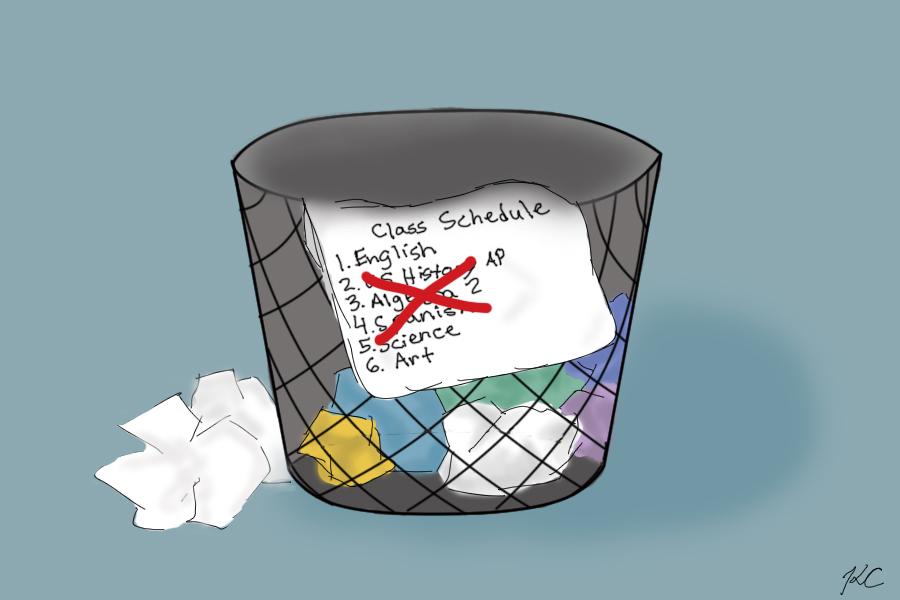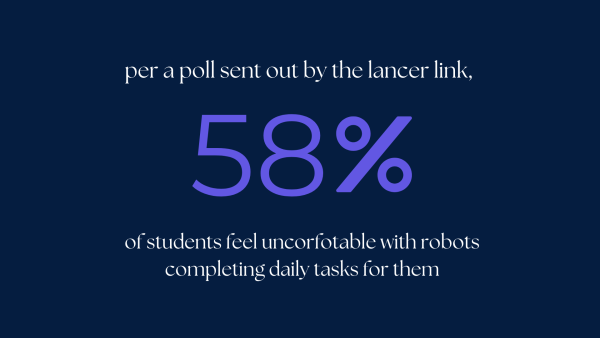Scheduling changes reduce teacher-student ratio
Four weeks into the year, adminstration yanked students from their schedules: collapsing an Algebra II and AP US History class, while adding an Algebra I, US History, Spanish I and Biology I class. Although the adjustment may frustrate those affected, the teacher-student ratio has at last been reduced.
“The only reason we went forward is that we had additional staffing from the district. Had we not had the additional staffing from the district, we probably wouldn’t have changed a thing until the next semester,” principal Dr. Steitz said. “We’re four weeks in, but we have 36 weeks left. If the district gives you the opportunity now, you’ve got to do it.”
As for Spanish, the scheduling changes resulted in multiple class shiftings that aimed to lessen class sizes and direct supplementary teaching attention toward Spanish I. To do this, Señora Hampton took on a new Spanish I class, Hampton’s Spanish II class transferred to Señora Blake and Blake’s former Spanish II class went under Señora Wakefield’s command.
“It’s really important that Spanish I students get the support they need in the early stages of language learning. Dr. Steitz really tried to push for that, because last year, we paid the price,” Wakefield said. “We’re seeing that because there were huge classes in Spanish I, this year’s Spanish II students aren’t as strong as they used to be. We definitely wanted to put another period of Spanish I in and reduce class sizes, so they could get more teacher attention, more hands-on experience and more one-on-one instruction.”
Concerning the history modifications, a US History class was installed to alleviate teachers from the surprisingly heavy flow of AP students into regular history. But accompanying the boons came banes.
“It’s difficult when a student who was in AP transfers into a regular history because you can’t really transfer the grades,” Mr. Dearie said. “It wouldn’t really be fair because they were probably transferring out of AP US History because they weren’t doing well. It’s a very challenging course, and they will do much better in regular US History. You wouldn’t want to really punish them, so many teachers start their grade over.”
Speculation has arisen whether this situation could have been entirely avoided. Some believe if Sage Creek had not opened, district money could have been channeled toward more fruitful possibilities.
“The cause of increased class sizes is both money — certainly overall we need more money to hire more teachers — but it’s also a matter of priorities,” Dearie said. “The school board’s priority was to open a second high school, which is a duplication of all the costs. That money, I believe, would have been far better spent in one high school and in hiring more teachers to lower the class size.”
In retrospect, certain teachers stood out amidst the confusion, attempting to make the best of the situation: notably, Wakefield. She explained her original reaction as “deer-in-the-headlights,” but ended up taking on an additional Spanish II class and relinquishing her prep period.
“There’s five teachers that are teaching six periods. They get an extra pay, but they get no prep period. At times, that’s very grueling; you don’t have any time to prepare, and you’re preparing at home and on the weekend,” Steitz said. “This shows that every opportunity we have to make classes smaller, teachers are stepping up and saying, ‘I’ll help. I’ll teach that class.’”
Your donation will support the student journalists of Carlsbad High School. Your contribution will allow us to purchase equipment and cover our annual website hosting costs.









